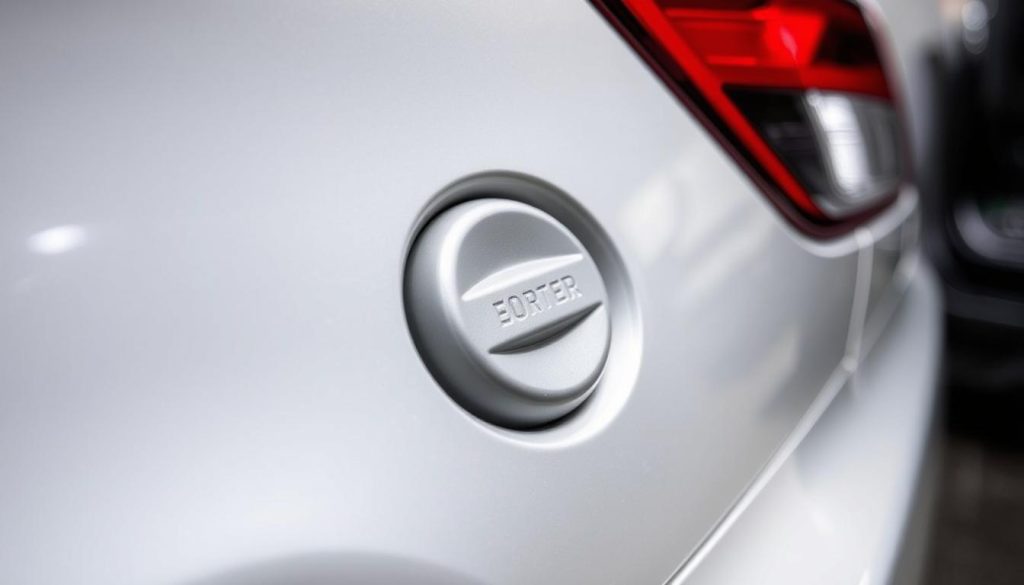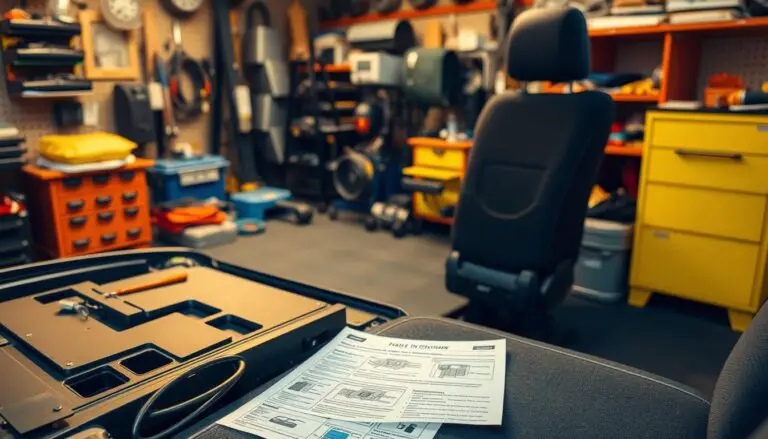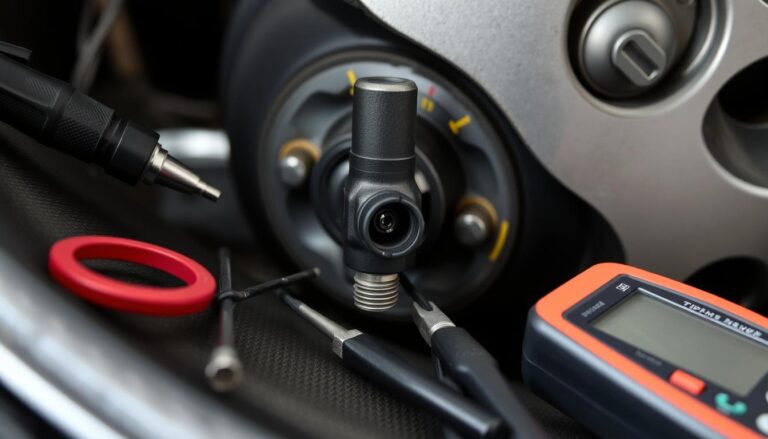Refueling your Subaru Forester is a straightforward process once you understand the steps involved. The fuel system is designed for ease of use, with a simple mechanism to access the fuel tank. Familiarizing yourself with this process can save time and reduce frustration at the pump.
Understanding how to properly open the fuel tank is essential for safe and efficient refueling. This guide will walk you through the necessary steps, ensuring that you can refuel your vehicle with confidence.
Key Takeaways
- Understand the fuel system of your Subaru Forester
- Learn the steps to access the fuel tank
- Troubleshoot common issues related to refueling
- Refuel your vehicle safely and efficiently
- Gain confidence in managing your vehicle’s fuel needs
Understanding Your Subaru Forester’s Fuel System
The fuel system within your Subaru Forester is instrumental in its performance. It is engineered to facilitate efficient fuel delivery, thus ensuring the vehicle’s longevity.
Fuel Tank Location and Capacity
The fuel reservoir of the Subaru Forester is situated at the rear, concealed beneath the rear seats. The tank’s volume varies across model years, yet most exhibit a capacity of approximately 15.9 gallons.
| Model Year | Fuel Tank Capacity |
|---|---|
| 2014-2018 | 15.9 gallons |
| 2019-Present | 16.6 gallons |
Fuel Door Design and Security Features
The fuel door mechanism of a Subaru Forester is crafted with security as its primary concern. It is typically activated by a release mechanism situated within the vehicle.
Locking vs. Non-locking Fuel Doors
Subaru Forester models may feature locking fuel doors, enhancing security against unauthorized access. In contrast, non-locking fuel doors are characterized by their simplicity yet maintain operational reliability.

Recognizing the distinctions between these designs is crucial for effective vehicle maintenance and operation.
Preparing to Open the Gas Tank on Subaru Forester
Initiating the refueling process for Subaru Forester owners necessitates a series of preparatory actions. These steps are designed to facilitate a seamless and secure refueling experience. They encompass an understanding of critical safety measures and the precise positioning of the vehicle at the fueling station.
Safety Precautions When Refueling
Adherence to refueling safety protocols is of utmost importance. It is imperative to ensure that the engine is in the off position and the parking brake is engaged. A prudent approach involves remaining vigilant and attentive to one’s environment, thus mitigating the risk of unforeseen hazards.
Positioning Your Vehicle at the Pump
The correct positioning of your Subaru Forester at the fueling station is a critical factor. It is essential to align your vehicle with the designated side, as indicated by the fuel door’s location on your vehicle.
Determining Which Side Your Fuel Door Is On
Examination of your vehicle’s fuel door is necessary; it is predominantly situated on the driver’s side for most Subaru Forester models. Yet, verification through the owner’s manual is advisable to confirm the exact location, should any ambiguity arise.
| Model Year | Typical Fuel Door Location |
|---|---|
| 2014-Present | Driver’s Side |
| 2009-2013 | Driver’s Side |

Locating the Fuel Door Release Mechanism
The mechanism for opening the fuel door is a pivotal aspect of your Subaru Forester’s design, balancing convenience with security during refueling. Mastery over its location and operation is crucial for a seamless driving experience.
Driver’s Side Floor Release Lever
Many Subaru Forester models incorporate a driver’s side floor release lever. Situated on the floor adjacent to the driver’s seat, it is distinguished by a symbol denoting its purpose. To liberate the fuel door, merely pull this lever.
Dashboard Release Button
Some Subaru Forester models are equipped with a dashboard release button. Positioned on the driver’s side dashboard, it is marked with a fuel pump icon. Activation of this button will unlock the fuel door.
Keyless Entry Fuel Door Features
Newer Subaru Forester models may boast keyless entry systems, which include a fuel door release function. In these models, the fuel door can be opened by pressing the corresponding button on the key fob or through the vehicle’s touchscreen interface.
| Model Year | Release Mechanism | Location |
|---|---|---|
| 2014-2018 | Driver’s Side Floor Lever | Near Driver’s Seat |
| 2019-Present | Keyless Entry | Key Fob or Touchscreen |
By becoming acquainted with the specific release mechanism in your Subaru Forester, you can guarantee a trouble-free refueling process. Whether it’s a lever, button, or keyless entry system, the process of opening the fuel door is straightforward.
Step-by-Step: How to Open Gas Tank on Subaru Forester
The procedure for opening the gas tank on your Subaru Forester is remarkably straightforward, once the necessary steps are understood. This comprehensive guide aims to facilitate a safe and efficient refueling process for your vehicle.
Activating the Release Mechanism
The initial step involves the activation of the fuel door release mechanism. Predominantly, this is achieved by pulling the release lever situated on the driver’s side floor. This lever is typically distinguished by a symbol that explicitly denotes its function.
Opening the Fuel Door Manually
Following the activation of the release mechanism, the fuel door must be manually opened. This is accomplished by a gentle push or pull on the door. The design of the fuel door ensures a seamless opening, granting access to the gas cap.
Removing the Gas Cap Properly
With the fuel door ajar, the gas cap can now be removed. Subaru Foresters frequently feature a tethered cap system, which serves to prevent cap loss.
Understanding the Tethered Cap System
The tethered cap system is a convenience feature that also mitigates the risk of cap loss. Upon removal, the cap remains attached to the fuel door via a tether, ensuring its retention with the vehicle.
Adhering to these steps will enable you to effortlessly access the gas tank on your Subaru Forester for refueling. It is imperative to securely replace the gas cap post-refueling to maintain the integrity of your fuel system.
Completing the Refueling Process
The refueling process for your Subaru Forester encompasses several critical steps, transcending mere fuel replenishment. It necessitates a meticulous approach to guarantee both safety and operational efficiency. This process is not merely about filling the tank; it is about executing it correctly to circumvent any potential vehicular malfunctions.
Selecting the Correct Fuel Type
Choosing the appropriate fuel type for your Subaru Forester is paramount. Utilizing an incorrect fuel type can precipitate a decline in vehicle performance and potentially inflict engine damage. Subaru’s directives stipulate that your Forester necessitates unleaded gasoline with an octane rating of 87 or higher. Employing a fuel with a lower octane rating can induce engine knocking or pinging, a condition that, if prolonged, may result in engine damage.
Proper Insertion of Fuel Nozzle
When inserting the fuel nozzle, it is imperative to ensure it is fully seated within the filler neck to avert fuel spillage. A correctly positioned nozzle also mitigates the risk of premature fuel pump shut-off.
Securely Replacing the Gas Cap
Post-refueling, the gas cap’s secure replacement is of utmost importance. A loosely fitted gas cap can activate the “Check Engine” light, a consequence of the compromised evaporative emission control system. It is essential to tighten the cap until it clicks to prevent this occurrence.
Avoiding “Check Engine” Light Triggers
To circumvent the activation of the “Check Engine” light during refueling, it is crucial to ensure the fuel nozzle’s proper insertion and the gas cap’s secure tightening post-refueling. Overfilling the tank should also be avoided, as it can lead to fuel ingress into the evaporative emission control system, potentially causing malfunctions.
| Refueling Step | Action | Benefit |
|---|---|---|
| Selecting Correct Fuel | Use unleaded gasoline with an octane rating of 87 or higher | Prevents engine damage and maintains performance |
| Proper Nozzle Insertion | Fully seat the nozzle in the filler neck | Prevents fuel spillage and premature shut-off |
| Replacing Gas Cap | Tighten until it clicks | Avoids triggering “Check Engine” light |
Variations Across Different Forester Model Years
The Subaru Forester’s design has undergone substantial evolution, with significant alterations in its fuel tank and fuel door release mechanisms. This evolution is critical for Forester owners to efficiently navigate the refueling process.
First and Second Generation (1997-2008)
In the early Subaru Forester models, the fuel door release mechanism was manually operated. Owners were required to open the fuel door by pulling a release lever or handle, typically located inside the vehicle.
Third Generation (2009-2013)
The third generation of the Subaru Forester introduced updates to the fuel door release mechanism. Some models featured an electronic release, enhancing convenience for drivers to access the gas tank.
Fourth and Fifth Generation (2014-Present)
The latest Subaru Forester generations have seen further advancements in fuel tank design and accessibility. Modern Foresters often incorporate advanced keyless entry systems and improved fuel door designs, enhancing the user experience.
Key features across these generations include:
- Model-specific fuel door release mechanisms, ranging from manual to electronic releases.
- Advancements in fuel tank capacity and design for better efficiency.
- Integration of keyless entry systems for easier access to the fuel tank.
Troubleshooting Common Gas Tank Opening Issues
Mastering the art of troubleshooting gas tank opening malfunctions in your Subaru Forester is paramount for a seamless refueling process. Owners frequently encounter obstacles when attempting to access their gas tank, yet these challenges can be mitigated through straightforward troubleshooting methodologies.
Stuck or Frozen Fuel Door
A malfunctioning fuel door can significantly disrupt your routine. To rectify this, employing a de-icer spray or gently warming the vicinity of the fuel door with a hairdryer may prove effective. Should the issue persist, professional intervention to prevent damage to the fuel door mechanism becomes imperative.
Malfunctioning Release Mechanism
When the release mechanism fails, inspect for any obstructions or debris impeding its functionality. Applying lubrication to the mechanism can also be beneficial. Should the problem endure, professional inspection and repair of the release mechanism are likely necessary.
Gas Cap Problems and Solutions
Challenges with the gas cap, such as difficulties in removal or replacement, can often be alleviated by thorough cleaning of the cap and filler neck. In cases where the cap is compromised, its replacement with a compliant unit is essential.
Emergency Access Methods
In scenarios where the fuel door cannot be opened conventionally, emergency access methods may be required. For certain Subaru Forester models, this entails manually releasing the fuel door from within the trunk or utilizing a spare key. Refer to your owner’s manual for detailed guidance on emergency access protocols tailored to your vehicle.
| Issue | Possible Cause | Solution |
|---|---|---|
| Stuck Fuel Door | Ice or Debris | De-icer spray or professional repair |
| Malfunctioning Release | Blockage or Wear | Lubrication or professional inspection |
| Gas Cap Issues | Dirt or Damage | Cleaning or replacement |
Conclusion
The act of opening the gas tank on a Subaru Forester, once the intricacies of its fuel system and release mechanism are grasped, proves to be a task of simplicity. Adherence to the procedural steps delineated within this guide guarantees a refueling experience that is both safe and efficient.
Whether one is a veteran Subaru owner or a novice to the Forester model, an understanding of the refueling process is paramount. Such knowledge serves as a bulwark against potential malfunctions and ensures that one is perpetually prepared for vehicular excursions.
For further insights into the upkeep of your Subaru Forester or the resolution of common maladies, refer to your owner’s manual or seek the expertise of a certified Subaru dealership. The act of securing the gas cap with due diligence post-refueling is equally vital for the preservation of your vehicle’s performance and safety.
FAQ
Where is the fuel tank located on a Subaru Forester?
Positioned at the rear of the vehicle, the fuel tank’s capacity is contingent upon the Subaru Forester’s model year and generation.
How do I open the gas tank on my Subaru Forester?
Activation of the fuel door release mechanism is required to access the gas tank. This can be achieved via a lever situated on the driver’s side floor or a button located on the dashboard, depending on the model’s configuration.
What type of fuel should I use in my Subaru Forester?
The owner’s manual will specify the recommended fuel type for your Subaru Forester. Adherence to this recommendation is crucial to prevent engine damage.
Why is my fuel door stuck or frozen?
Ice or corrosion can cause the fuel door to become stuck or frozen. Application of a de-icer or lubricant may resolve the issue, or gentle manipulation of the door may be necessary.
How do I properly remove the gas cap on my Subaru Forester?
To remove the gas cap, turn it counterclockwise. Be aware that certain models employ a tethered cap system, which secures the cap to the fuel door.
What should I do if my gas cap is malfunctioning?
Malfunctioning gas caps necessitate replacement to prevent triggering the “Check Engine” light. Consultation with a Subaru dealership or a professional mechanic is advisable for assistance.
Are there any differences in the fuel door release mechanism across different Subaru Forester model years?
Variability in the fuel door release mechanism exists across different model years. Some models incorporate a keyless entry system or a dashboard release button.
How can I avoid triggering the “Check Engine” light during refueling?
To circumvent triggering the “Check Engine” light, ensure proper gas cap replacement, utilize the correct fuel type, and avoid overfilling the tank.
What are some common issues with the gas tank on a Subaru Forester?
Common issues encompass a stuck or frozen fuel door, malfunctioning release mechanism, and gas cap problems. Troubleshooting and, if necessary, consulting with a professional mechanic can resolve these issues.


